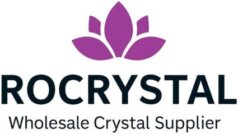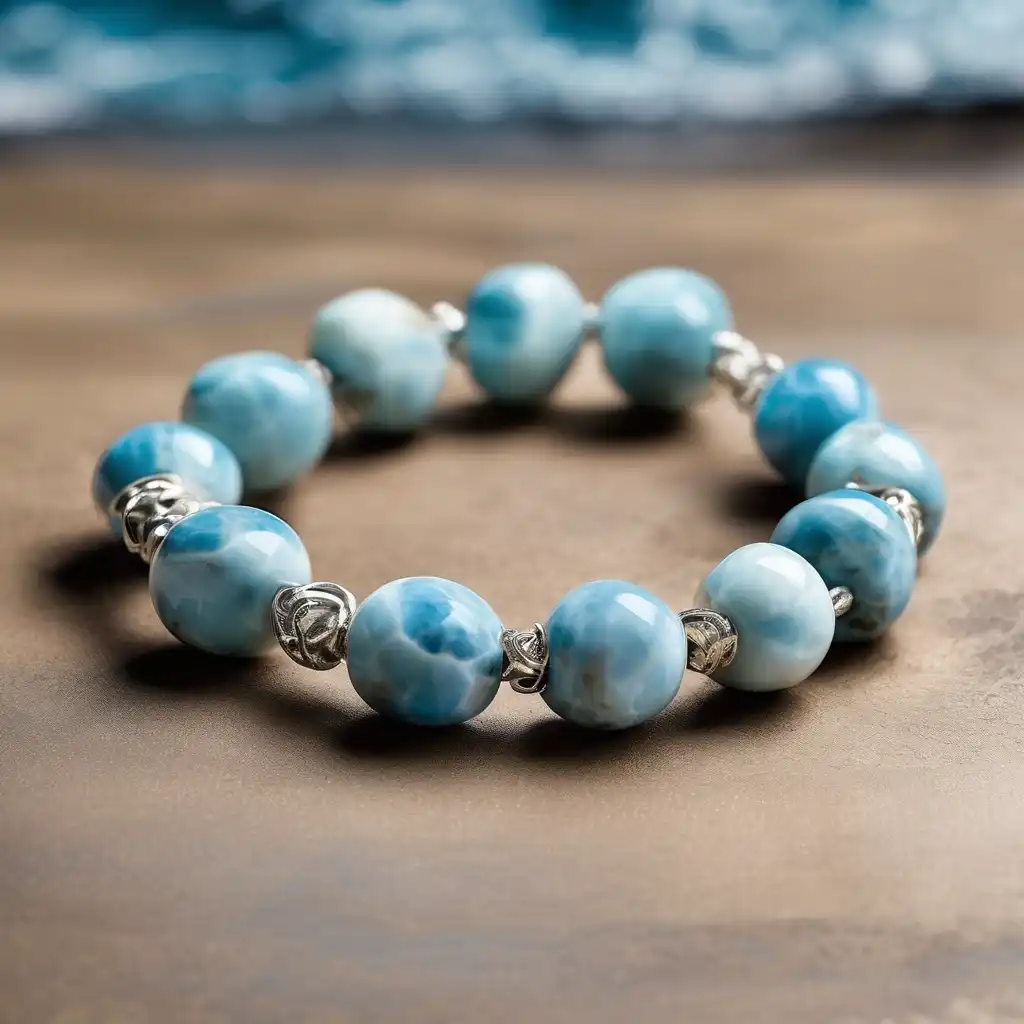Tree Agate vs Moss Agate: Everything You Need to Know
Origins & Shared Foundations
Not Just Another Green Stone
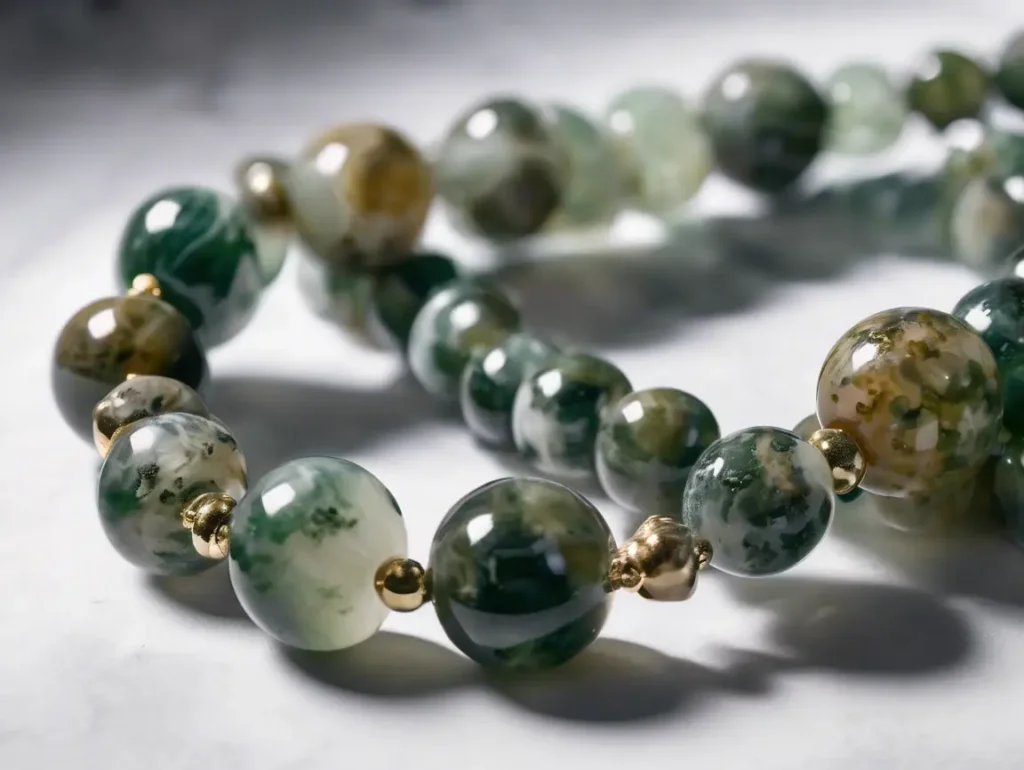
If you’ve ever browsed a gem shop or scrolled through a crystal marketplace, you’ve probably run into this question: Tree Agate vs Moss Agate, what’s the difference? They look strikingly similar—both display green and white patterns that feel deeply connected to nature. To the untrained eye, they might seem like two versions of the same stone. But once you take a closer look, you’ll realize this debate isn’t just gemstone trivia—it reflects real contrasts in appearance, energy, and meaning.
At their core, both tree agate and moss agate are forms of chalcedony. They’re composed of silicon dioxide (SiO₂), belong to the quartz family, and rate between 6.5 and 7 on the Mohs hardness scale. This shared mineral identity is why many people assume the Tree Agate vs Moss Agate comparison is irrelevant. After all, if they’re chemically the same, shouldn’t they feel the same? The truth is—absolutely not.
What’s Going on Inside the stone?
The real charm of these stones lies in the patterns hidden within. Moss agate carries soft, drifting greens that appear suspended in a misty, translucent base—like peering into a quiet forest pond. The inclusions in moss agate drift gently through the stone, like strands of moss swaying underwater or algae caught in a current. There’s a softness to it, something fluid and organic. Tree agate offers a completely different feel—its creamy white base is firm and quiet, broken by bold green lines that resemble tree limbs, plant roots, or even rivers seen from above. When it comes to Tree Agate vs Moss Agate, this contrast in structure and visual rhythm often determines which stone someone feels drawn to.
Hold each stone up to the light, and the difference becomes obvious. Moss agate lets the light pass through, revealing its delicate, inner garden. Tree Agate blocks the light and commands your focus with its bold, grounded appearance. These are not just design variations—they’re completely different visual experiences. In the context of Tree Agate vs Moss Agate, it’s like comparing mist to wood, movement to stillness.
The Earth in Your Pocket
Beyond the way they look, tree agate and moss agate resonate differently in energy work and spiritual practice. Tree agate is often described as a stone of inner peace. It provides grounding and support during long-term growth or life transitions. Moss agate, on the other hand, is associated with renewal and emotional balance. It’s commonly used to relieve stress, open the heart, and encourage fresh starts. In the conversation around Tree Agate vs Moss Agate, both are grounding stones—but they ground in their own unique ways.
You’ll see this distinction reflected in jewelry trends too. Moss agate tends to be used in thin, polished slices, where its translucency can shine through. Tree agate is more likely to be carved into solid beads or chunky talismans. Designers often pair both in the same piece, especially when creating “earth energy” collections. It’s not just about variety—it’s about how the balance of Tree Agate vs Moss Agate gives each piece a more complex emotional resonance.
So why the mix-up?
Even with their clear differences, it’s surprisingly common to see the two mixed up—by both sellers and buyers. Part of the reason is price: in many retail settings, especially with mass-produced jewelry, Tree Agate and Moss Agate are sold at nearly the same cost, making it easy to assume they’re interchangeable. Another is mislabeling. In low-light settings or when viewing lower-quality specimens, telling them apart can be tricky. But if you know what to look for—light transparency, inclusion structure, and base color—you’ll quickly train your eye to navigate the Tree Agate vs Moss Agate question with confidence.
Over time, collectors tend to form their own favorites. Many are drawn to the delicate, almost watercolor-like patterns in moss agate, while others are captivated by the strong, rooted look of tree agate with its striking branch-like inclusions.There’s no right or wrong side to pick in the Tree Agate vs Moss Agate debate—it’s about which energy speaks to your current season of life.
Why This Comparison Matters
On the surface, comparing two green chalcedonies might seem unnecessary. But when you hold, wear, or meditate with them, you see how much of an emotional and energetic difference there is. Tree Agate vs Moss Agate is not a question of which one is better. It’s about understanding how each one fits into your personal story, your healing, and your home.
If you’ve ever felt torn between these two stones, you’re not alone. That’s why we’re breaking down the full comparison—visually, energetically, and practically—across the next sections. The goal? Our aim is to assist you in making a clear decision about which of these earthly companions should be the next addition to your hand, pocket, or life.
How to Tell Them Apart at a Glance
First Impressions Matter

If you’ve ever held both stones in your hand and still couldn’t tell them apart, you’re not alone. The question of Tree Agate vs Moss Agate comes up often because their base colors—green and white—create an immediate resemblance. But once you know what to look for, the differences become clear and unmistakable. It’s not about needing expert tools or gem lab reports. It’s about observing texture, transparency, and visual movement.
Tree agate is typically fully opaque. You can’t see through it—not even when you hold it against a bright light. Its green inclusions appear sharp and defined, spreading across the stone like branches of a tree or veins in a leaf. Moss agate, on the other hand, is more translucent. Light filters through it, and its green threads look like floating plant matter. The difference feels almost emotional: Tree Agate is still and grounded; Moss Agate is soft and fluid. And that subtle shift in feeling is often enough to settle the Tree Agate vs Moss Agate debate for many buyers.
Transparency and Texture
One of the easiest ways to distinguish these two is by checking how light interacts with them. Tree agate blocks light entirely. Even polished specimens look dense and quiet, like marble. Moss agate behaves differently—it glows slightly when backlit, and you’ll often see the green inclusions illuminated from within. This translucency makes moss agate a popular choice for pendants or thin cabochons, where light brings out its layered depth. In contrast, tree agate is better suited to carvings or larger beads where its bold patterns can be seen without needing light to pass through.
The feel under your fingers can also be telling. Moss agate tends to polish to a slightly glossier finish due to its semi-transparency, while tree agate often holds a more matte or softly waxy surface. When viewed side by side, the finish adds to the visual cues that help solve the Tree Agate vs Moss Agate question.
Inclusions: Moss vs Branches
What truly sets them apart is their inclusivity. Moss agates are fine and filament-like, winding through the stone in soft, random patterns. They resemble algae, seaweed, or moss caught mid-motion. Tree Agate’s inclusions, by contrast, are more rigid and structured. They don’t just drift; they seem to anchor. You might see a pattern that looks like the cross-section of a root system or a frozen tree in winter. These visual metaphors are part of what makes the Tree Agate vs Moss Agate comparison so compelling—each stone tells a different story.
If you’re looking at a piece and you feel like it’s whispering or flowing, chances are it’s moss agate. If it feels solid, almost architectural in the way its green spreads across the surface, you’re probably holding tree agate.
Druzy, Depth, and Other Visual Clues
Some tree agate specimens contain druzy—tiny quartz crystals that form in pockets on the stone’s surface. While not always present, this feature is far more common in tree agate than in moss agate. Druzy adds sparkle and texture and can be a giveaway if you’re unsure which stone you’re looking at. Moss agate, meanwhile, occasionally shows color variations—blues, reds, and browns—within its translucent base, depending on trace minerals present during its formation. These added hues rarely appear in tree agates.
In the ongoing comparison of Tree Agate vs Moss Agate, collectors often use this visual layering as another point of distinction. Moss agate tends to have more variation in color and depth, while tree agate is typically more uniform in tone and layout.
A Quick Visual Checklist
If you’re shopping and don’t have time to research every piece, here’s a fast way to tell the two apart:
- Transparency:
- Moss Agate → semi-translucent
- Tree Agate: Fully opaque
- Inclusion Shape:
- Moss Agate → moss-like, wispy, floating
- Tree Agate → tree-like, branching, grounded
- Finish & Surface:
- Moss Agate → smoother, shinier under polish.
- Tree Agate: More matte, waxy feel
- Common Uses:
- Moss Agate → pendants, cabochons, meditation stones
- Tree Agate → chunky beads, carvings, statement jewelry.
- Druzy Presence:
- More likely in Tree Agate
These quick identifiers can save you time—and frustration—when choosing between the two. Once your eye becomes trained, the Tree Agate vs Moss Agate question won’t feel so mysterious anymore.
Metaphysical Power & Zodiac Match-Ups
Two Very Different Grounding vibrations
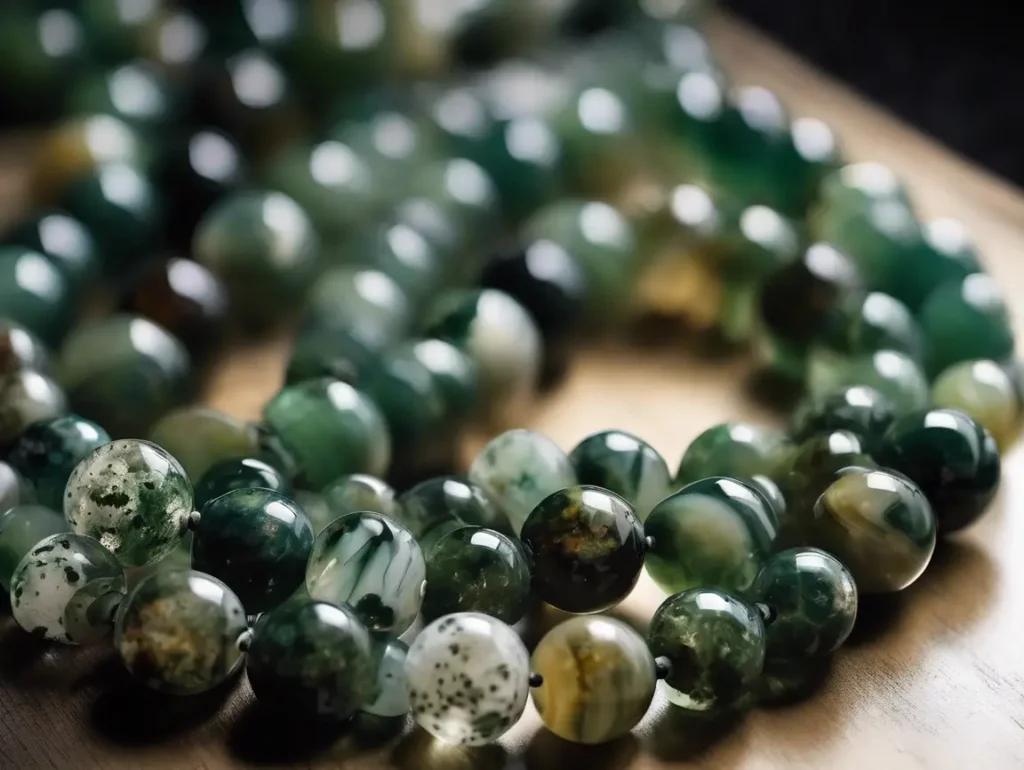
Ask ten crystal lovers to explain Tree Agate vs Moss Agate and you’ll hear ten versions of the same theme: both stones keep your feet on the ground, yet they do it in noticeably different ways. Picture two friends on a long hike. One, the Tree Agate type, carries the map and reminds everyone to drink water. The other, the moss agate friend, cracks jokes and points out tiny wildflowers you would have missed. Both make the journey easier; each brings something unique to the trail.
Moss Agate: The Gentle Emotional Gardener
Spend a little time with moss agate, and you start to feel as if the stone is watering the parts of you that went a bit dry. Healers often describe it as “garden energy.” The phrase sounds airy until you wear a moss agate pendant through a stressful week and notice you’re a touch less reactive and a bit more forgiving—of yourself most of all. A jeweler I know keeps a bowl of tumbled moss agate by the cash register; she swears customers loosen their shoulders the moment they pick one up. In the ongoing Tree Agate vs Moss Agate debate, moss sits firmly in the “let it flow” camp, helping emotions move instead of damming them up.
Tree Agate: The Stoic Woodland Guardian
Tree Agate feels sturdier—almost like holding a polished slice of forest floor. People reach for it when life calls for slow, deliberate growth: starting a new job, rebuilding after a breakup, or sticking to a long-term plan that keeps slipping off track. A meditation teacher once told me she places a tree agate over the hearts of clients who can’t stop overthinking. “It’s like asking a wise old oak to keep watch,” she said. That sums up Tree Agate vs Moss Agate rather neatly: Moss whispers, “Breathe,” and Tree says, “Stand tall.”
Zodiac Hints—But Not Hard Rules
Astrology fans sometimes pair tree agate with Taurus or Virgo because those signs appreciate reliability and routine. Moss agate often lands with Gemini or Libra, signs that crave mental breezes and fresh starts. However, the stars hold no ultimate power. I’m a Leo, supposedly a fire sign, yet tree agate sits on my desk because its calm counters my occasional flare-ups. Meanwhile, a friend born under steady Taurus energy wears moss agate every day to soften her perfectionist streak. The takeaway in the Tree Agate vs Moss Agate conversation? Let’s outrank the natal chart.
Rituals You Can Actually Stick to.
You don’t need elaborate moon ceremonies to work with either stone. Try this: slip a piece of tree agate into your pocket before a tough meeting; at each pause, touch the stone and breathe out through the soles of your feet. Or drop a small moss agate in your bath the night before a big decision and notice how the inner chatter quiets down. Comparing Tree Agate vs Moss Agate in practice is often as simple as asking, Do I want backbone (tree) or balm (moss) today?
Choosing Your Everyday Ally
When new collectors message me asking whether to start with tree agate or moss agate, I give them a goofy but effective exercise. I tell them to hold one stone in each hand, close their eyes, and imagine they’re walking through woods after rain. If the hand with Tree Agate feels heavier—in a comforting blanket sort of way—they likely need structure. If the moss agate side tingles like dew on skin, they probably need movement and release. After a minute or two, the Tree Agate vs Moss Agate decision usually makes itself.
Final Thought on Energy Pairing
Remember, stones aren’t jealous. Plenty of people carry both—tree agate for morning focus and moss agate for evening wind-down. The real magic of Tree Agate vs Moss Agate lies in knowing which call to answer at any given moment: the rooted hush of the forest floor or the gentle hush of moss growing over stone. Whichever you choose today, the other will still be waiting when your needs shift with the seasons.
Jewelry, Design Ideas & Pairing Tips
One Stone Speaks, the Other Whispers
If you’ve ever seen tree agate and moss agate side by side in jewelry, you’ll notice something intriguing: they don’t compete—they complement. The contrast in opacity and texture actually makes them an excellent duo for designers. In the world of Tree Agate vs Moss Agate, one offers structure and visual weight, while the other brings flow and softness. This balance translates beautifully into wearable art.
Designers often choose tree agate for pieces that need to anchor a look—bracelets with chunky beads, centerpieces for grounding-themed malas, or statement rings that feel both earthy and bold. Moss agate, on the other hand, tends to show up in lighter forms—thin pendants, teardrop earrings, or wire-wrapped stones that highlight its natural translucence. When viewed through the lens of Tree Agate vs Moss Agate, this pattern of use reflects each stone’s energetic presence: solid versus soothing.
Carvings, Beads & Everyday wear.
From a craftsperson’s perspective, the stones also behave differently under tools. Tree agate, being fully opaque and more uniform in density, lends itself well to precise carving. You’ll often find it in shapes like towers, spheres, or palm stones. Moss agate, with its inner layers and subtle color shifts, is best showcased in forms that let light in—think beads, cabochons, or even thin tiles set in resin.
If you’re debating Tree Agate vs Moss Agate for everyday wear, consider how each fits your lifestyle. Tree agate, with its rugged look and grounding feel, pairs well with leather bands, natural wood beads, or even oxidized metal. It carries a rustic elegance that appeals to minimalists and nature lovers alike. Moss agate works beautifully with sterling silver or rose gold, adding a gentle sparkle to softer aesthetics. Choosing between Tree Agate vs Moss Agate in your jewelry box might come down to mood as much as outfit.
Pairing with Other Crystals
Now let’s talk pairings. In energetic work, some stones just don’t vibe well together. But Tree Agate and Moss Agate are surprisingly cooperative with others. Tree agate, for instance, pairs especially well with smoky quartz or hematite—stones known for protection and deep grounding. Moss agate, on the other hand, loves company like rose quartz (for heart healing) or aquamarine (to keep emotional energy flowing).
Still, the Tree Agate vs Moss Agate comparison shines when you pair them together. It’s not just about visual harmony; energetically, they bring out the best in each other. Tree Agate provides stability, while Moss Agate softens the emotional landscape. If you’re building a crystal grid, bracelet, or altar for personal transformation, combining the two gives you a wide energetic range.
What Not to Pair With Agate
Some crystal workers recommend keeping agates away from overly intense stones like moldavite or raw citrine—especially if you’re using them in grounding work. The reason? Agate operates on a calm, slow frequency, and pairing it with something too energetic can feel like trying to meditate with loud music in the background. Instead of enhancing your focus, the high-vibration stone might overpower the gentle rhythm agate is known for. If your goal is peace, focus, or rootedness, stick with crystals that work in the same rhythm. This applies whether you’re choosing between Tree Agate vs Moss Agate or using both.
One trick seasoned collectors use is the “pocket pair test.” If two stones feel like they’re fighting for attention in your palm, they probably don’t belong in the same piece. With Tree Agate, that discomfort shows up as tension; with Moss Agate, it may feel like static or mental noise. It’s your body’s way of answering the Tree Agate vs Moss Agate question without words.
Personal Style Meets Spiritual Practice
The beauty of these two stones lies in their ability to seamlessly blend fashion and function. You could wear a tree agate cuff simply because you love its forest-like veins—and still feel more centered after a chaotic day. Or you might slip on a moss agate pendant, thinking only of its color, and find yourself less reactive in traffic or at work. The Tree Agate vs Moss Agate experience doesn’t require belief in metaphysics to be felt. Sometimes, the stone just works.
From an aesthetic standpoint, their versatility makes them staples in modern boho, cottagecore, and even minimalist jewelry lines. Tree agate fits earthy palettes—greens, browns, and warm neutrals. Moss agate plays well with pastels, soft blues, and even deep charcoals. Whether you’re buying for the energy, the color, or the craftsmanship, choosing between Tree Agate vs Moss Agate comes down to how you want to feel—and what kind of story you want your jewelry to tell.
Buying Guide, Care Routine, FAQs & Final Choice
What to Know Before You Buy
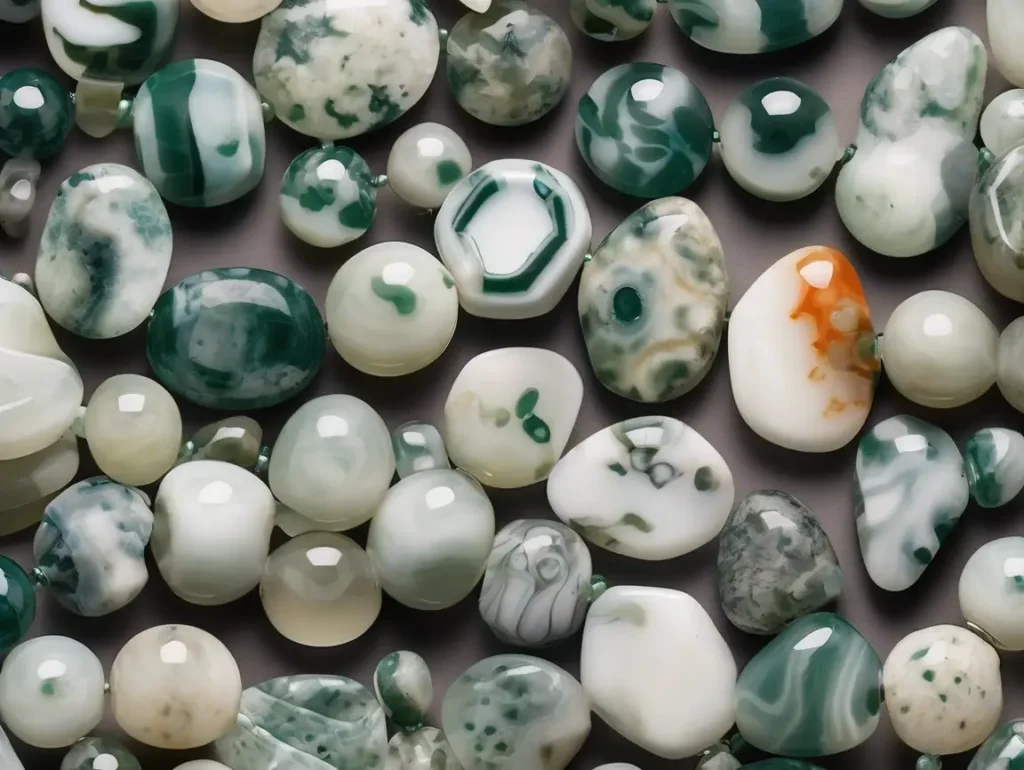
Whether you’re just getting into crystals or you’ve been collecting for years, the question of Tree Agate vs Moss Agate often comes up when it’s time to make a purchase. At first glance, the two stones might seem interchangeable. But once you start comparing texture, energy, and visual detail, choosing the right one becomes more personal. Luckily, both are budget-friendly compared to other healing stones, making them excellent options for beginners or anyone building a versatile collection.
One thing to watch out for is poor labeling. In markets and online listings, moss agate and tree agate are sometimes confused—even by sellers. You’ll see “tree agate” listed on translucent pieces or “moss agate” attached to something that looks more like dendritic jasper. When in doubt, use the core principles of Tree Agate vs Moss Agate: is it translucent with floating green threads (moss) or opaque with branching inclusions (tree)? If you remember that, you’ll avoid most mix-ups.
Quality, Grades & What to Look For
When shopping, look for stones with clear, well-defined patterns. For tree agate, the ideal piece has sharp, tree-like inclusions across a smooth white or milky base. The contrast should be bold enough to stand out. With moss agate, look for a soft, layered translucence—like a wisp of green fog. Too much cloudiness or low-grade polish can mute the beauty of moss agate’s internal movement.
Some high-quality moss agate pieces also include other hues: rust, cream, and blue-gray. These aren’t flaws—they’re signs of additional mineral presence and often make the stone more visually dynamic. In the Tree Agate vs Moss Agate conversation, moss tends to offer more color variation, while tree is typically consistent in tone.
How to Care for Your Stones
Caring for these stones is easy. Both are forms of chalcedony, so they hold up well to daily wear. Just avoid harsh chemicals or ultrasonic cleaners. A soft cloth and mild soap are more than enough. If you want to “cleanse” them energetically, try placing them in a bowl of dry brown rice overnight or leaving them on a windowsill during a full moon.
Agate doesn’t mind water, but if your piece includes druzy (especially in tree agate), take extra care—those tiny crystal clusters can be delicate. In the Tree Agate vs Moss Agate debate, tree agate may require slightly gentler handling due to its surface features, while moss agate’s smoothness makes it easy to wipe clean.
FAQs About Tree Agate vs Moss Agate
What is another name for tree agate?
Tree agate is sometimes called dendritic agate, though true dendritic agate can include other mineral formations and colors. The names are occasionally used interchangeably in retail, but purists note that dendritic agate tends to be more translucent than standard tree agate.
Who can wear moss agate?
Moss agate is suitable for almost anyone, but it’s especially helpful for those going through emotional transitions. Artists, healers, and empaths are often drawn to its calming, heart-opening properties.
Which zodiac signs benefit most from tree agate or moss agate?
Tree agate resonates with earth signs like Virgo and Taurus due to its grounding nature. Moss agate connects well with air signs such as Gemini and Libra, offering emotional clarity and peace. But zodiac aside, the best guide is how the stone makes you feel when you hold it.
Is moss agate bad luck?
Not at all. In fact, many cultures consider it lucky—especially in gardens, farms, and spaces of healing. Moss agate symbolizes growth and prosperity, not misfortune.
Making the Final Choice
At the end of the day, choosing between Tree Agate vs Moss Agate isn’t about picking a “better” stone—it’s about choosing the right support for where you are. If you’re building something lasting—emotionally, professionally, or spiritually—tree agate can keep you steady. If you’re healing, shifting direction, or just need some softness in your life, moss agate may be your best ally.
Some people alternate between the two depending on the day or mood. Others wear both together, appreciating how they balance each other out. The beauty of the Tree Agate vs Moss Agate conversation is that you don’t have to choose one forever. Your stones can evolve with you, just like your intentions.
